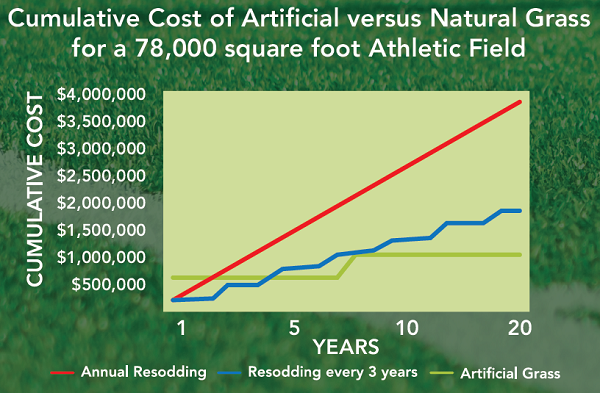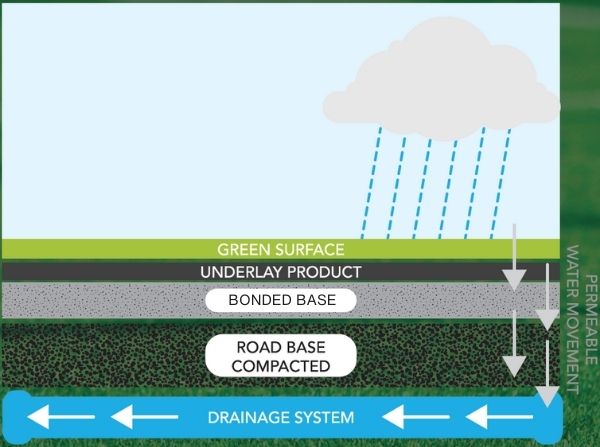Bowling Green Construction – Our Unique Drainage System
Our unique bowling green drainage system is a polymer stabilised base offering the stability of concrete with the benefit of drawing water down through the permeable surface into the drainage system below.
We specialise in highly reactive H type soils – renowned for heave (ground movement) due to overwatering.
Our polymer stabilising base system and Greengauge woven carpet removes the main cause of ground heave by eliminating the need to water the bowling surface and offers a solid, permeable base keeping water away from the volatile soils below.
As we work very closely with our customers throughout the construction of their synthetic surface you will know what is happening at each step of the process.
Contact us today and see how we can help.

When it comes to maintaining athletic fields, decision-makers often weigh the pros and cons of natural grass versus artificial turf. One of the most significant factors influencing that decision is cost. A recent cost analysis of a 78,000 square foot athletic field sheds light on how expenses add up over time, depending on the type of surface used.
Cumulative Cost Breakdown Over 20 Years
The chart compares three scenarios:
1. Natural Grass – Annual Resodding (red line):
This option has the steepest cost increase over time. Beginning just under $500,000 in year one, the cost rises sharply year after year. By year 20, total expenses exceed $3.5 million. The consistent and high maintenance needs of natural grass, frequent mowing, fertilizing, irrigation, and yearly resodding—make it the most expensive option in the long term.
2. Natural Grass – Resodding Every Three Years (blue line):
This approach reduces the frequency of resodding, resulting in a more moderate cost increase. While still more expensive than artificial grass, it maintains a slower growth rate in expenses. After 20 years, the cumulative cost lands just above $2 million, significantly lower than annual resodding, but still substantially more than artificial turf.
3. Artificial Grass (green line):
With a higher initial investment, artificial grass starts closer to the $1 million mark in the first year. However, its cumulative cost remains nearly flat over two decades, topping out around $1.25 million. Without the ongoing maintenance and resodding requirements of natural grass, artificial turf proves to be the most cost-effective option over time.
Contact us today and see how we can help.

